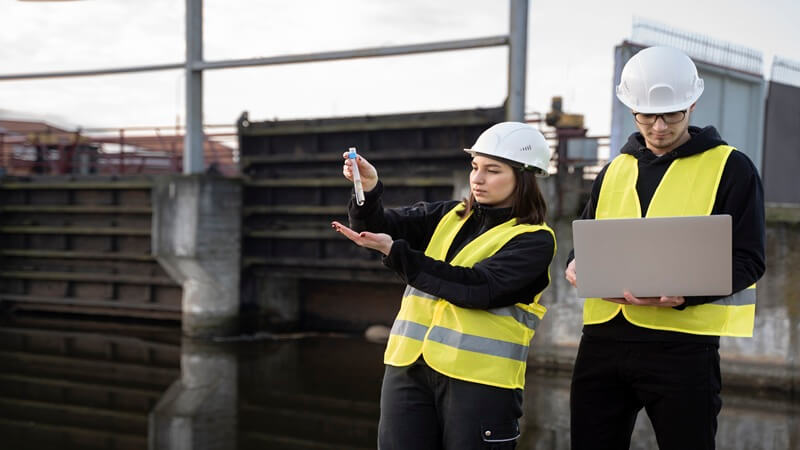Key Takeaways
- Thorough planning and risk mitigation are the foundation of safe blasting operations.
- Modern technology significantly increases blast precision and safety.
- Ongoing training and rigorous safety protocols are essential for protecting workers and sites.
Table of Contents
- Comprehensive Planning and Risk Assessment
- Advanced Technology in Blasting Operations
- Importance of Regular Training and Safety Protocols
- Personal Protective Equipment (PPE)
- Environmental Considerations and Regulatory Compliance
- Post-Blast Inspections and Continuous Improvement
In today’s fast-paced construction industry, blasting plays a pivotal role in facilitating efficient excavation and site development. Despite its advantages, construction blasting demands strict adherence to safety protocols to prevent accidents and safeguard both the workforce and the broader community. For those seeking reliable expertise, professional construction blasting services in PA offer specialized solutions that prioritize safety and efficiency at every stage of the process.
The complexity and risks associated with construction blasting require a holistic approach—beginning with meticulous planning, leveraging cutting-edge technology, and ensuring constant education and compliance. Incorporating these components not only upholds safety standards but also enhances project quality and timelines.
Comprehensive Planning and Risk Assessment
Every successful blasting operation starts with comprehensive planning and robust risk assessment. These initial steps involve reviewing geological surveys to determine subsurface conditions and identifying hazards, such as gas pockets, utility lines, or unstable rock. Detailed blast designs are formulated based on this data, allowing construction managers to forecast and mitigate risks like flyrock, excessive vibrations, and air overpressure. Proactive planning not only prevents property damage but also minimizes disruptions to nearby communities and environments.
Risk Mitigation Strategies
Careful development of a blasting plan integrates emergency response procedures and communication strategies, ensuring all stakeholders are informed and prepared. Using checklists, site-specific risk assessments, and pre-blast meetings are key elements to an effective risk management strategy.
Advanced Technology in Blasting Operations
The integration of advanced technology has transformed the landscape of construction blasting. Digital blast design software can simulate outcomes, allowing engineers to optimize fragmentation and minimize risks before actual fieldwork begins. Electronic detonators deliver unparalleled accuracy, offering millisecond-delay options that dramatically reduce the risk of misfires and maximize blast efficiency.
Seismic monitoring equipment is also crucial, enabling operators to track ground vibrations in real time and make necessary adjustments. These technological advancements have led to safer, more predictable blasting operations, reducing the risk of unexpected incidents and supporting environmental protection efforts.
Importance of Regular Training and Safety Protocols
Personnel involved in blasting must undergo regular training to stay abreast of evolving techniques, risks, and regulations. This includes not just theoretical knowledge but also hands-on drills simulating emergency scenarios. Effective safety programs incorporate competency checks, safety meetings, and ongoing evaluations that reinforce a culture of caution and accountability on-site.
Consistency in safety protocols—such as clear blast warning signals, designated safe zones, and rigorous pre-blast checklists—empowers workers to act confidently and effectively in high-risk scenarios. OSHA guidelines recommend frequent refresher training and continuous improvement programs as vital measures for accident prevention.
Personal Protective Equipment (PPE)
Wearing the proper PPE is non-negotiable for anyone engaged in blasting operations. Essential equipment includes hard hats, safety glasses, hearing protection, respirators, protective gloves, and flame-resistant clothing. According to OSHA, personal protective equipment serves as the last line of defense against workplace hazards and must meet strict safety standards. The effectiveness of PPE depends on proper use and regular maintenance, which is why training on proper fit, storage, and inspection is mandatory in professional settings.
Types of PPE and Their Roles
Each piece of PPE serves a unique function. For instance, hearing protection guards against damage from blast overpressure, while respirators reduce the risk of inhaling hazardous dust. Safety glasses shield from flying debris, and hard hats protect against falling objects or surface shocks during blasting activities.
Environmental Considerations and Regulatory Compliance
Environmental stewardship is integral to safe construction blasting. Adherence to local, state, and federal regulations is mandatory to prevent pollution, protect water quality, and safeguard wildlife. Key practices include using blast mats to contain debris, deploying dust suppression systems, and selecting environmentally friendly blasting agents.
Particular attention must also be paid to material selection—for example, using silica-free abrasive materials can significantly reduce worker exposure to hazardous crystalline silica dust, which is known to cause respiratory complications.
Post-Blast Inspections and Continuous Improvement
After each blast, thorough site inspections are critical to confirm conditions are safe for workers to return and to assess the effectiveness of the operation. Inspectors look for unexploded charges, check for structural or environmental damage, and verify that all safety measures are in place. Findings from these inspections feed directly into a continuous improvement loop, where lessons learned inform updates to training, technology, and safety protocols for future projects.
This commitment to ongoing evaluation and refinement ensures that construction blasting operations not only meet current standards but also evolve to anticipate future challenges, adapting to new technologies and regulatory demands as the industry advances.
In summary, safe practices in modern construction blasting rest on a foundation of detailed planning, technological adoption, comprehensive training, proper use of personal protective equipment, environmental awareness, and relentless pursuit of improvement. These principles collectively create a safer, more sustainable path for both industry professionals and the communities they serve.
